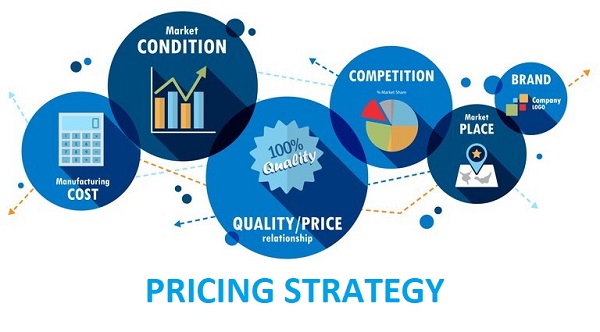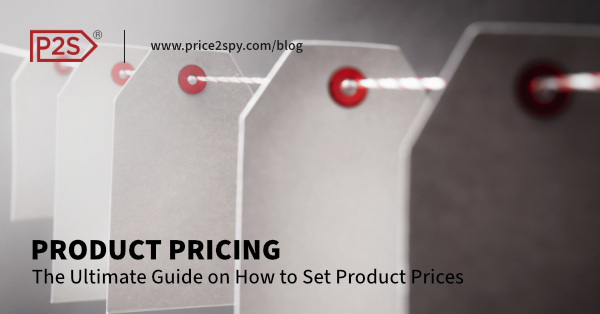
Product Pricing: The Ultimate Guide on How to Set Product Prices
Dealing with product pricing is not a one-off thing. Setting attractive, yet sustainable prices requires data. Lots of it. With more data, the easier it is to defend your product pricing decisions.
The goal of this article is to present you core concepts and frameworks when it comes to product pricing. We will also show you quicker ways to get the competitive data you need. Pricing needs to be an established process in order for an eCommerce company to function properly.
The knowledge of how to do product pricing right comes from knowing three things:
- Knowing your costs,
- Knowing your customers,
- Knowing your competitors.
However, costs fluctuate. Customers’ preferences are never the same. Competitors are unpredictable.
Let’s see how to deal with all of this.

Knowing your costs
When it comes to product pricing, especially in eCommerce channels, knowing your costs is non-negotiable. White it may sound simple, your costs are more than what the usual Cost of Goods Sold (COGS) definition entails. In a large-scale operation, such as a multi-national or a global eCommerce business, knowing all your costs is paramount. Some of the costs you should have in mind are:

- Variable ops: pick/pack, outbound shipping & surcharges, last-mile anomalies, fuel add-ons.
- Payment & platform fees: card fees (percentage + fixed), marketplace commissions, pay-later premiums.
- Discounts & promos: on-site promos, coupon codes, bundles, loyalty redemptions.
- Post-sale costs: returns, refurb, support time, write-offs, fraud chargebacks.
- Taxes & duties: VAT/GST rules by market, cross-border duties, IOSS/OSS thresholds.
Here’s a quick experiment you can do. Take one SKU and walk the “price waterfall.” Start from list price, subtract the promos you actually run, remove payment and marketplace fees, include taxes where relevant, add shipping and handling, reserve for expected returns and fraud, and only then subtract COGS and variable ops.
What remains is the contribution margin. Contribution margin is money left after all the variable costs tied to the sale, and before all the fixed costs. It is the money each unit contributes toward covering fixed overhead and producing profit. If a routine 10–15% promotion kills it, you don’t have a pricing issue. You have a unit-economics issue.
If that’s the case, you should look into improving COGS, fees, or shipping. It may be smart to do this before proceeding to deal with the competition.
Knowing your customers
If we were to summarize a typical consumer’s mindset it would probably be: People pay for outcomes, not input costs.
This is important because calculating your prices doesn’t end with knowing your costs. Knowing how your customers perceive value is crucial. Once you do, you may start implementing value-based pricing more effectively.
The key concept to understand is how a customer actually decides to make a purchase.

Customers usually go through the following steps when making a purchase decision:
- Need recognition
- Research
- Evaluation of alternatives
- Purchase decision
- Post-purchase evaluation
What does this mean?
This means that you should connect value and outcomes with customers’ willingness to pay. Below are some practical tips on how you can do just that.
Segment by job to be done
Define segments by use case, not age or gender. Examples: “urgent replacement today,” “exact-fit part by Friday,” “style upgrade this season.” Map each segment to different price sensitivity and service promises. Route pricing, shipping, and merchandising rules by segment.
Quantify the value drivers
Build a simple scorecard per SKU or family: lifespan (months), warranty (years), failure risk (%), time saved (minutes), compatibility risk (%). Translate these into revenue where possible (service calls avoided, returns avoided, hours saved). Use the score to justify price premiums or to decide where a price increase will stick.
Identify and respect price thresholds
Test adjacent ladders (e.g., €49 vs €59, €59 vs €69) with stable traffic. Track conversion, AOV, and return-adjusted contribution. Record the breakpoints that cause step-down conversion and keep key SKUs just below the relevant threshold for each segment.
Test with margin discipline
Firstly, define what success means before testing. For example, at least +3% contribution per session with no more than a 1% drop in conversion. Test only one or two levers at a time, such as price point, bundle, or promo depth, and run the test through a full demand cycle. Keep the winner or roll back quickly, and treat any test that lifts conversion but reduces contribution as a failure.
Manage price perception, not just the number
Managing price perception means showing total landed cost early, promising realistic delivery dates, and making returns predictable. Target review volume and rating (e.g., 50+ reviews at ≥4.4). Improve PDP clarity on fit and compatibility. These moves often raise willingness to pay more than a small price cut.
Additional note
If you’re in B2B or high-consideration B2C, layer in customer lifetime value (CLV) logic: if onboarding a customer predictably yields repeat purchases, a lower entry price (or welcome bundle) can be rational, provided the margin recovers on subsequent orders.
Knowing your competitors / market
When researching your competitors in order to set product prices, firstly you have to make sure you are comparing like with like. Loose product matching leads to loose price comparison. Ensure correct models, pack sizes, warranties, shipping speeds, and return policies have been matched.
Additionally, comparing averages and means across your and competitors’ inventories is of little value. For proper insights, and more importantly for making the right pricing decisions, you will need to get into details. You will have to choose your price position per category, at minimum.
Also, if you can afford to, you should experiment. Have a few SKUs have intentionally aggressive pricing to win traffic and potentially cross-sell.
One crucial thing when dealing with competitor product pricing is having repricing limits. This will stop you from entering a price war – a classic race-to-the-bottom scenario. This is easily achievable with Price2Spy’s Advanced Repricing module, which makes it possible to completely automate your repricing strategy.
Pricing pressure
After monitoring competitor product pricing for a while, you may start to feel what’s known as pricing pressure. It is the market telling you which way your price should move and how much. Although it is primarily connected with the pressure of having to lower your price, it can actually go both ways.
Pricing pressure can be:
- Upward pricing pressure: exists when market conditions make a higher product price both defensible and resilient.
- Downward pricing pressure: exists when market conditions make a lower price necessary to maintain volume and share.
Pricing pressure is highly contextual, category-specific, and time-bound.
Conclusion
Pricing gets easier when you stop chasing perfect numbers and start running a steady process. The core never really changes: know your costs, know your customers, and know your competitors.
Build a clear waterfall, track a handful of value and market signals, and let small, well-designed tests answer the debates that meetings rarely settle. When pressure points up, lift carefully and prove the value. When pressure points down, defend the margin with fences, bundles, and better service rather than blanket cuts.
Keep the cadence simple and visible. Refresh inputs on a schedule, write down why you changed a price, and judge success by contribution as well as conversion.
If something works, lock it in. If it doesn’t, roll it back and move on. With that rhythm in place, pricing stops feeling like firefighting and starts behaving like a lever you can pull with confidence.
Free 14-day trial!
Start your Price2Spy trial now, and see how it can ease the process of implementing your pricing strategy.
Try for free



